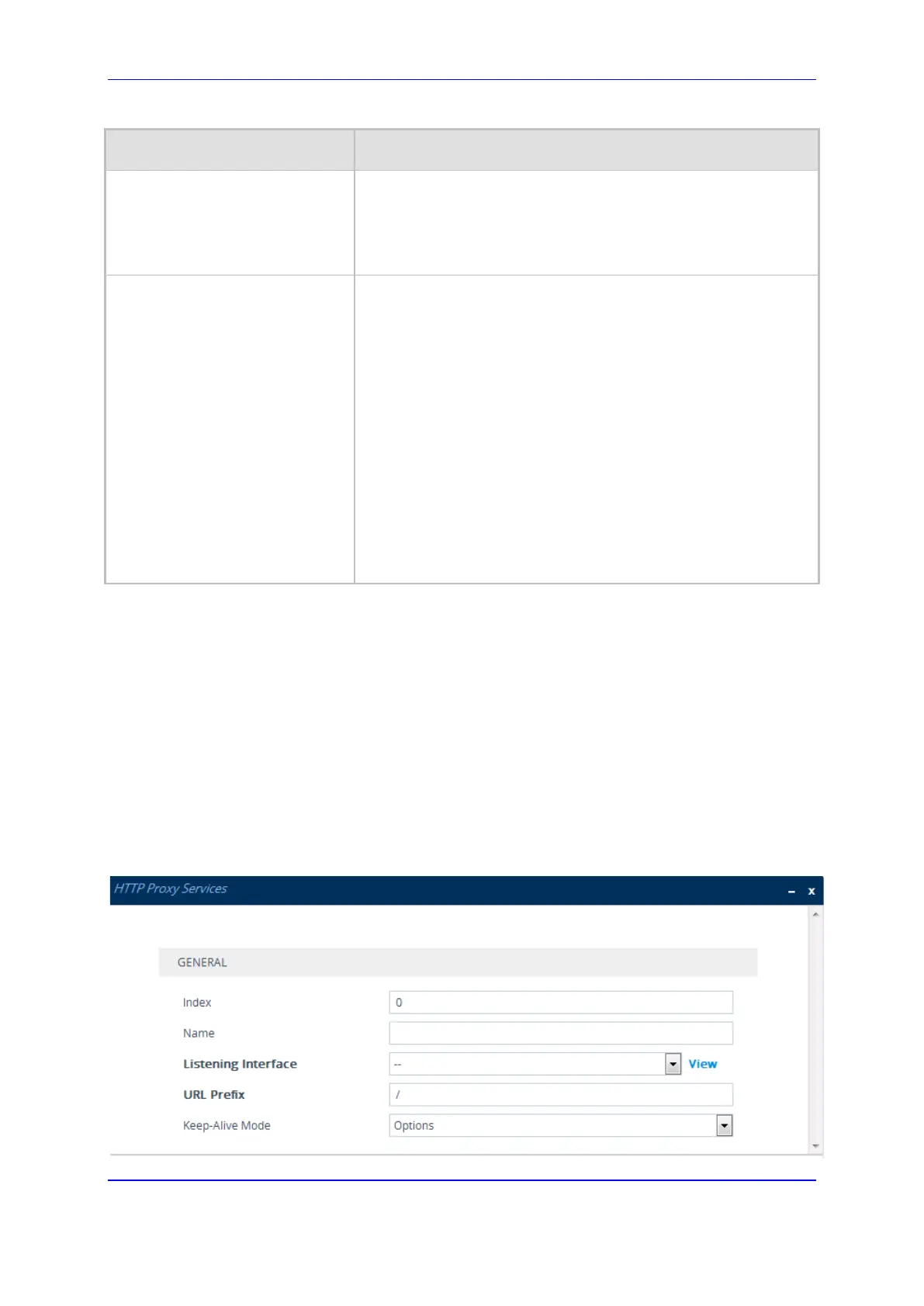Version 7.2 275 Mediant 1000B Gateway & E-SBC
User's Manual 15. Services
Parameter Description
[HTTPInterface_TLSContext]
By default, the default TLS Context (Index 0) is assigned.
To configure TLS Contexts, see ''Configuring TLS Certificate
Contexts'' on page 103.
Note: The parameter is applicable only if the connection protocol
is HTTPS (defined using the 'Protocol' parameter, above).
Verify Certificate
verify-cert
[HTTPInterface_VerifyCert]
Enables TLS certificate verification when the connection with the
proxy service is based on HTTPS.
[0] No = (Default) No certificate verification is done.
[1] Yes = The device verifies the authentication of the
certificate received from the HTTPS peer. The device
authenticates the certificate against the trusted root certificate
store associated with the associated TLS Context (see 'TLS
Context' parameter above) and if ok, allows communication
with the HTTPS peer. If authentication fails, the device denies
communication (i.e., handshake fails). The device can also
authenticate the certificate by querying with an Online
Certificate Status Protocol (OCSP) server whether the
certificate has been revoked. This is also configured for the
associated TLS Context.
Note: The parameter is applicable only if the connection protocol
is HTTPS (defined using the 'Protocol' parameter, above).
15.6.3 Configuring HTTP Proxy Services
The HTTP Proxy Services table lets you configure up to 10 HTTP Proxy Services.
The following procedure describes how to configure HTTP Proxy Services through the Web
interface. You can also configure it through ini file (HTTPProxyService) or CLI (configure
network > http-proxy http-proxy-serv).
To configure an HTTP Proxy Service:
1. Open the HTTP Proxy Services table (Setup menu > IP Network tab > HTTP Proxy
folder > HTTP Proxy Services).
2. Click New; the following dialog box appears:
Figure 15-49: HTTP Proxy Services Table - Add Dialog Box

